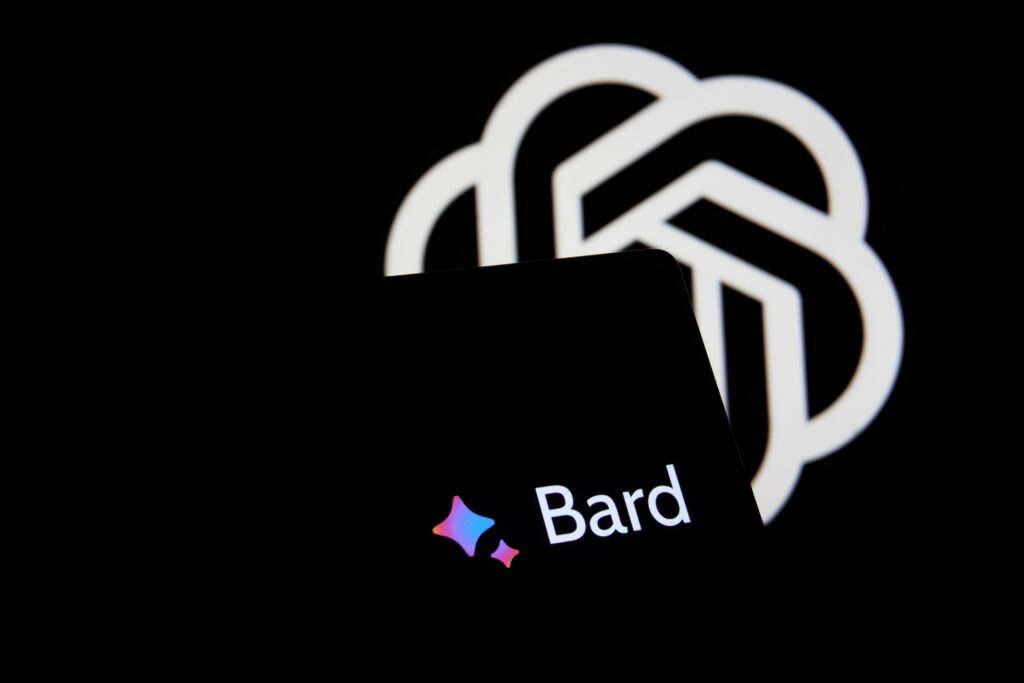In an era where digital transformation is no longer a luxury but a necessity for Small and Medium Enterprises (SMEs), the launch of Google’s AI chatbot Bard this week has sparked a lot of interest. AI-powered tools like Bard and OpenAI’s ChatGPT are revolutionizing the way we interact with technology, offering SMEs new ways to automate tasks, engage with customers, and gain insights from data. Understanding the key differences, benefits, and drawbacks between these tools is crucial for SMEs looking to leverage AI for competitive advantage.
OpenAI’s ChatGPT
When launched in November 2022, ChatGPT quickly became an internet sensation. It uses the GPT-3.5 language model, trained from human-created text on the internet, to generate a wide array of content. This includes written code, product descriptions, blog posts, email drafts, summaries of transcripts, meetings and podcasts, simple explanations of complex topics, law briefs, translations, jokes, memes, and social media posts. The paid version, ChatGPT Plus, uses the upgraded GPT-4 model.
However, there are fundamental limitations in ChatGPT’s data sources: There is no newer data then September 2021, limiting its ability to provide information on newer research. In a rapidly changing world, this could be a significant drawback for SMEs needing up-to-date information. It also creates content in a single text prompt, which may be a pro or con depending on your needs and skills in building the prompt.
Google’s Bard
In response to ChatGPT, Google introduced Bard, a chatbot that uses the next-generation language model PaLM 2. Bard’s main goal is to provide simple answers to queries, similar to digital assistants like Alexa and Siri, but with additional links for users to gather more information thanks to Google search. Unlike ChatGPT, Bard continually draws information from the internet, keeping it up-to-date with the latest research and information. This real-time access to information can be a game-changer for SMEs needing to stay on top of current trends and developments.
What’s the difference?
The primary difference between ChatGPT and Bard lies in their data sources and the way they generate content. Bard uses Google’s newest language model — PaLM 2, while ChatGPT uses GPT-3.5, with GPT-4 technology available in its paid version. Bard creates more chunks of information, while ChatGPT generates content in a single text prompt.
Pros and Cons
Each chatbot has its strengths and weaknesses. Bard is user-friendly, better for research, can research current updated information such as recent events, and can summarize webpages. However, it does not track previous requests, doesn’t so far offer as many plug-ins and integrations, can suffer from AI hallucination, and its sources aren’t always reliable on the internet, as any source from the Internet.
ChatGPT excels at writing, stores previous conversations, and offers various plug-ins and integrations with popular sites and apps such as Expedia, Instacart, and Zapier. However, users need to copy and paste articles for summary, responses may be too long to grasp, and, as always, must be fact-checked due to the AI hallucination.
Business Takeaways: Bard vs. ChatGPT
As we navigate the early days of these AI chatbots, both tools offer unique opportunities for SMEs, each with its own set of use cases that can help streamline operations, enhance customer engagement, and drive business growth.
ChatGPT shines in its ability to generate human-like text, making it an excellent tool for automating content creation. SMEs can use it to draft blog posts, product descriptions, and social media posts, saving valuable time and resources. Its ability to store previous conversations also makes it a valuable tool for customer service, providing consistent and immediate responses to customer inquiries. This can significantly enhance the customer experience, leading to increased customer satisfaction and loyalty. Moreover, ChatGPT’s integrations with popular sites and apps such as Expedia, Instacart, and Zapier can be leveraged to automate various business processes.
Bard, on the other hand, excels in providing up-to-date, detailed answers to queries. This makes it a powerful tool for market research and competitive analysis. SMEs can use Bard to stay on top of the latest trends, gather insights on competitors, and make informed business decisions. Its ability to summarize webpages can also be used to quickly digest large amounts of information, aiding in decision-making and strategy development. Furthermore, Bard’s goal to provide simple answers, similar to digital assistants like Alexa and Siri, can be leveraged to enhance customer engagement.
In choosing between Bard and ChatGPT, SMEs should consider their unique requirements, resources, and strategic objectives. While ChatGPT might be more suited to SMEs looking to automate content creation and customer service, Bard could be the better choice for those needing real-time access to information for market research and decision-making. As these AI chatbots continue to evolve, they will undoubtedly open up new possibilities for SMEs to streamline operations, enhance customer engagement, and drive business growth.
